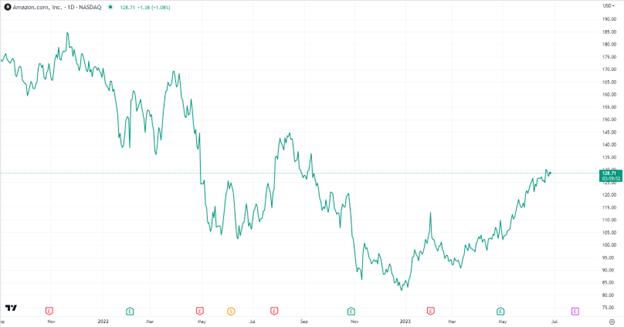Just like a marketplace to buy and sell products, a stock exchange enables people to buy and sell stocks, securities, and bonds. Understanding stock exchanges and their functioning can make it easier for you to invest in stocks or commodities. Stock exchanges are a way for corporations to raise capital and entice investors and other enterprises towards their business. This helps the public understand what the company is doing and learn more about the value of their investment. It is a place that brings together companies and individuals who want to purchase or sell stocks.
Stock prices are always fluctuating, and they depend on several factors including the global economy, the Federal Reserve, inflation, industry-specific movements and company-specific activities. While the stock market can help you make money, it has also gone through a major crash in 1929 and 2008. In 1929, the economy started contracting and the market went through several unsettling price declines. As a result, there was investor anxiety and what followed was a deluge of selling and chaos.
Later in 2008, the bankruptcy of Lehman Brothers followed by the Merrill Lynch collapse led to several bank failures in Europe and this led to sharp reductions in stock values across the globe. Known as the Crash of 2008, it also led to significant losses for investors.
Fundamentals of the stock market
As discussed above, a stock exchange is a place where different financial instruments can be traded. It provides liquidity in the market and allows buyers and sellers to execute the trades without any delays. An exchange can also help ensure that trading occurs in a fair and orderly manner so that the financial information is not misused.
A stock will first become available on an exchange once the company has an initial public offering (IPO). This is when it sells the initial set of shares to the primary market. Once the IPO floats shares and they are in the hands of public shareholders, they will be bought and sold in the secondary market. These are the two main modes of operation that stock exchanges use. A few also have traders that are located on the exchange floor and they handle the buy and sell process for investors.
However, electronic trading is the most common today and there are very few physical trading floors with traders. There was a point of time when it was just a market on Wall Street but today, it has global operations and investors from one country can now buy and sell stocks of companies located in several other countries.
Types of stock exchanges
Now let’s take a look at the different types of stock exchanges in the market.
- Auction markets: In the auction market, the price of a security will be determined by the highest price that the buyers are willing to pay for it. This is known as a bid. The lowest price that the seller is ready to accept, is known as an offer. In the market, the buyers and sellers will make bids and offers and then execute a trade. It is usually done by brokers and dealers who handle the trades for their clients.
- Dealer Markets: A dealer market is a place where the dealers post prices at which they are ready to buy or sell a stock. They will handle the entire transaction by using their money to buy and sell the stock.
- Electronic Exchanges: With changing times, we have electronic exchanges where there is no need for a broker to sell on a trading floor. The exchange uses technology to connect buyers and sellers in a marketplace. Thus, reducing time and effort. Most stock exchanges today support electronic trading. It allows investors to execute buy and sell orders without the need for a market marker.
- OTC Exchanges: Most stocks that are traded in an OTC exchange are smaller companies that do not meet the listing requirement of stock exchanges. An over-the-counter exchange will allow stocks to be bought and sold outside of the stock exchanges and usually through a broker-dealer network.
Stock fundamentals
The price of a particular stock is determined by the demand and supply. If the demand is high, the price will go up and if the demand drops, the price will fall. There are several ways of calculating the intrinsic value or fair price value of a stock but it is mainly driven by the demand and supply factors. When you buy a stock, you gain ownership in the company and you have a right to the dividend payouts. Several investors use stocks to generate passive income over the years. However, there is no guarantee of a payout or of earning gains on your investment.
Stock investment might seem attractive but it helps to be cautious. Research well and learn more about the investment you are making. The market cannot be timed and while there is a chance of making money, there is also a risk of losing money.















